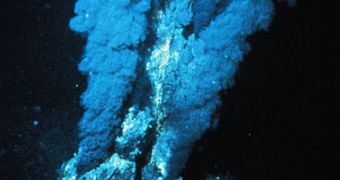Geoscientists at theUniversity of Illinois at Chicago (UIC) have recently been able to develop a new type of machine for conducting scientific simulations. The device is able to faithfully replicate the conditions present in the deep-sea, ranging from temperature to pressure and more. Additionally, it provides a much cleaner and safer environment for conducting direct studies of samples placed within the apparatus' small tank. In spite of the harsh conditions that are generated within, scientific observations are easily made using X-rays, PhysOrg reports.
The deep ocean is one of the most brutal environments on Earth. Thousands of feet under the surface of the oceans, the waters are pitch-black, and exert massive pressure on anything that dares venture within. Temperatures are also very low, so conducting scientific experiments is a very complex business. On the other hand, understanding precisely how sediments and rocks on the ocean floor interact with the variety of fluids and gases that exists here – especially around hydrothermal vents – is crucial to getting a clearer picture of a large number of natural cycles that involve the world's waters.
“Instead of going down to the abyssal plain of the ocean floor, we're bringing it to the lab,” UIC Professor of Earth and Environmental Sciences Stephen Guggenheim explains. “We'll be able to duplicate very precisely what happens on the ocean floor. We'll see minerals interaction with sea water and with gases we can add, such as carbon dioxide or methane. And we can run experiments over longer terms, even for several months, to see what happens,” UIC Emeritus Professor Gus Koster van Groos adds. The work was made possible through a grant awarded by the US National Science Foundation (NSF).
The new simulator is capable of exerting about 1,000 atmospheres' worth of pressure on the water samples inside the test chamber. Temperatures within can also be adjusted between zero and 200 degrees Celsius. The higher temperature range is aimed at mimicking the type of marine environment that exists around hydrothermal vents. The composition of the materials that enter chemical reactions inside the test tank is analyzed and determined via a scientific process known as X-ray diffraction, the team says. The fact that X-ray technologies were adapted for use under such conditions is a major achievement in itself, other scientists say.
Injection valves are also planned for the testing device. The researchers want to use them to inject bacteria into the mix, and determine how life forms may have appeared in such harsh environments. “We'd like to see how it changes the speed of reactions. But ultimately, adding molecules from which organisms can develop might help us better understand how life evolved on the early Earth,” Guggenheim concludes.

 14 DAY TRIAL //
14 DAY TRIAL //